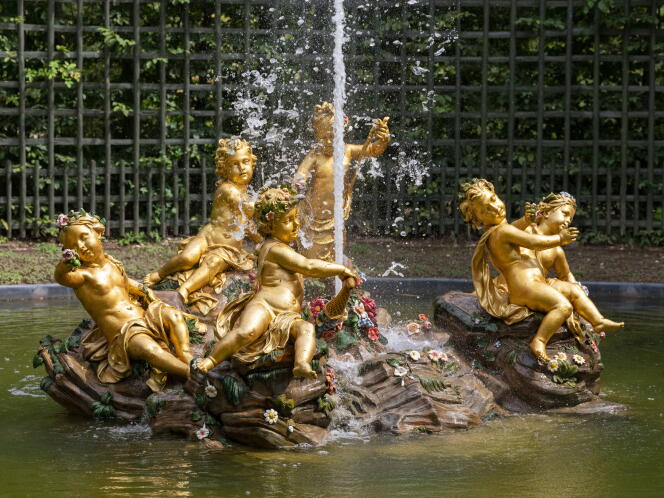

From the murmuring cascatelle to the triumphant water games of the Sun King's estates, water can be found everywhere in historic gardens. It is staged in motionless mirrors of water reflecting the sky or gushing forth, bringing to life stone fountains and gilded water cascades. But it also flows from more discreet springs, winding through shady undergrowth, to the delight of walkers unafraid of getting lost.

Versailles is the quintessential garden, designed by Louis XIV for his own glory and created by a brilliant gardener, André Le Nôtre (1613-1700). With his mastery of perspective and the art of gardening, Le Nôtre transformed a marshy area into the most beautiful garden of its time. Absent yet essential, water was diverted by hand or drawn from the Seine by a (deafening) machine in the neighboring city Marly and poured into gigantic reservoirs. The science of the best Italian fountain-makers was called upon to supply countless fountains, whose decorations were designed by the greatest artists of the time.
From the Château's terrace, along the main axis of the gardens, you can admire the Parterre d'Eau, the Latone fountain, the Apollo's chariot pool (currently being restored) and the Grand Canal (with its lovely walk all around). To the south, opposite the Orangerie, but separate from the Château, the Suisses lake, open to visitors, runs alongside the King's kitchen garden, with its imposing royal gate. To the north, the Dragon and Neptune pools regularly come alive with spectacular water effects, as do the groves of the Colonnade, Encelade, Salle de Bal and Bains d'Apollon, during Grandes Eaux Musicales and Jardins Musicaux events (admission fee charged). And let's not forget the Trianon Water Cascade, whose marble and gold have recently been restored and reconnected with water.
Château de Versailles, Place d'Armes, Versailles. The park and gardens are open daily, with extended hours in the summer. There is a paid entry to the gardens during the Grandes Eaux musicales and the Jardins musicaux. Admission is charged for the Domaine de Trianon (including the Queen's Hamlet). Practical information at Chateauversailles.fr.
<img class="lazy" src="data:image/svg+xml,%3Csvg xmlns='http://www.w3.org/2000/svg' viewBox='0 0 664 443'%3E%3C/svg%3E" data-srcset=" https://img.lemde.fr/2023/08/17/0/0/3072/2048/556/0/75/0/f14b5e3_1692268493203-gueulards-largeur.jpg 556w, https://img.lemde.fr/2023/08/17/0/0/3072/2048/600/0/75/0/f14b5e3_1692268493203-gueulards-largeur.jpg 600w, https://img.lemde.fr/2023/08/17/0/0/3072/2048/664/0/75/0/f14b5e3_1692268493203-gueulards-largeur.jpg 664w, https://img.lemde.fr/2023/08/17/0/0/3072/2048/700/0/75/0/f14b5e3_1692268493203-gueulards-largeur.jpg 700w, https://img.lemde.fr/2023/08/17/0/0/3072/2048/800/0/75/0/f14b5e3_1692268493203-gueulards-largeur.jpg 800w" data-sizes="(min-width: 1024px) 556px, 100vw" alt="A view of the " gueulards",="" dolphin="" heads="" with="" gaping="" mouths="" through="" which="" water="" flows="" from="" the="" basins="" at="" courances."="" width="100%" height="auto">
The Château de Courances in the department of Essonne, south of Paris, built in the 18th century, underwent major remodeling in the last quarter of the 19th century, including the addition of an exterior staircase inspired by the one at Fontainebleau. The design of some parts of the park is Renaissance, thus predating Le Nôtre's creations at Vaux-le-Vicomte, Chantilly or Versailles. The main water feature, the Miroir, which covers an area of one hectare, dates from the 18th century, the Bassins de la Baigneuse and Du Fer à Cheval from the early 20th century, during work carried out by an ancestor of the current owners. The pool in the elegant Japanese garden, on the other hand, is more recent.
You have 58.7% of this article left to read. The rest is for subscribers only.
